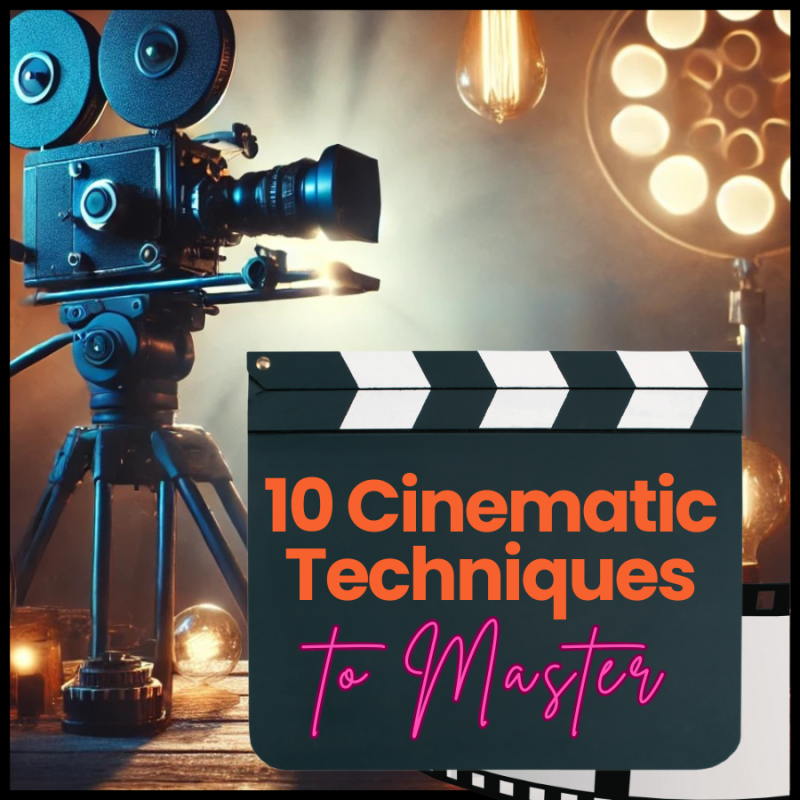Marketing your indie film on social media can be a game-changer, offering a cost-effective way to reach and engage with a global audience. In today’s digital age, platforms like Instagram, Facebook, Twitter, TikTok, and YouTube are invaluable tools for building a community, promoting your work, and driving buzz around your film.
Why Cinematic Techniques Matter
Cinematic techniques are the foundation of visual storytelling. They:
- Enhance Storytelling: Convey emotions, themes, and character arcs visually.
- Create Visual Appeal: Engage audiences with stunning, memorable imagery.
- Establish Tone and Atmosphere: Set the mood and immerse viewers in your world.
Whether you’re working with a micro-budget or a small crew, these techniques can significantly impact your film’s quality and resonance.
1. Master the Rule of Thirds
The rule of thirds is a basic yet powerful composition technique. Divide your frame into a 3×3 grid and place your subject along the lines or at their intersections.
- Why It Works: Creates balance and draws the viewer’s eye naturally to key elements.
- How to Apply: Use grid overlays on your camera for precise framing.
2. Leverage Lighting for Mood
Lighting is one of the most impactful tools in a filmmaker’s arsenal.
- Natural Light: Use golden hour for warm tones or overcast days for diffused light.
- Artificial Light: Experiment with LED panels or practical lights for creative effects.
- Tips: Play with shadows and color temperatures to evoke emotions.
3. Master Camera Movement
Dynamic camera movements add energy and emotion to your scenes.
- Techniques to Try:
- Dolly Shots: Smoothly move the camera toward or away from the subject.
- Handheld Shots: Add a raw, intimate feel.
- Tracking Shots: Follow the subject for immersive storytelling.
- Budget Tip: Use DIY tools like a skateboard or a slider alternative for smooth motion.
4. Use Depth of Field to Focus Attention
Depth of field allows you to isolate your subject by blurring the background or foreground.
- Why It’s Effective: Guides the viewer’s focus and adds a cinematic quality.
- How to Achieve: Use wide apertures (e.g., f/1.8) and proper lens selection.
5. Incorporate Creative Transitions
Transitions can elevate your storytelling by linking scenes seamlessly.
- Examples: Match cuts, whip pans, or fade-ins and fade-outs.
- When to Use: Match the transition style to the tone of your film, such as quick cuts for action or dissolves for dreamy sequences.
6. Explore Color Grading
Color grading shapes the visual identity of your film.
- Warm Tones: Convey nostalgia or warmth.
- Cool Tones: Evoke sadness or tension.
- How to Start: Use editing software like DaVinci Resolve or Adobe Premiere Pro to tweak your footage’s colors.
7. Frame with Purpose
Every shot should have intentional framing that reflects the story.
- Symmetry: Use for perfection or harmony.
- Negative Space: Highlight isolation or emptiness.
- Leading Lines: Direct the viewer’s gaze toward the subject.
8. Capture Emotion with Close-Ups
Close-ups reveal characters’ emotions and create a deeper connection with the audience.
- Tips for Impact: Focus on eyes, hands, or subtle expressions to communicate non-verbal storytelling.
- Avoid Overuse: Balance with medium and wide shots for variety.
9. Utilize Sound Design
Sound is often overlooked but essential for immersion.
- Ambient Sounds: Add realism by incorporating background noises.
- Foley Effects: Enhance actions with custom-recorded sounds.
- Music and Silence: Use music for mood and silence for dramatic tension.
10. Build Suspense with Editing
Editing influences pacing and tension.
- Quick Cuts: Increase excitement or urgency.
- Long Takes: Build anticipation or highlight performance.
- Tips: Use contrast between slow and fast pacing to keep audiences engaged.
Indie filmmaking thrives on creativity and resourcefulness. By mastering these 10 cinematic techniques, you can produce visually compelling and emotionally resonant films that stand out in a competitive industry. Practice and experiment to find your unique style, and let your passion for storytelling shine.
Ready to take your filmmaking to the next level? Start applying these techniques today and transform your indie projects into cinematic masterpieces.
Transform Your Screenwriting with Transformational Screenwriting

Want to refine your storytelling craft? Transformational Screenwriting is your ultimate guide to creating compelling character arcs and narratives that resonate with audiences. Elevate your storytelling and ensure your work stands out in the competitive indie film industry.
🎥 Unlock the Power of Transformational Screenwriting Now!


2 thoughts on “10 Cinematic Techniques Every Indie Filmmaker Should Master”
Pingback: Creating Relatable Film Characters
Pingback: Filmmaking in the Digital Era: Essential Tools for Indie Filmmakers